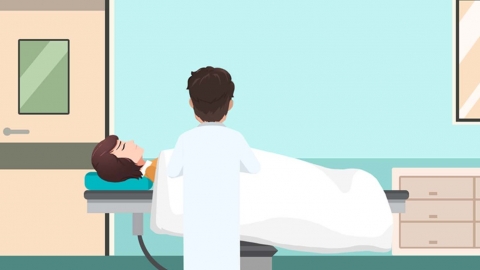What does a hypoechoic nodule in the uterine wall mean?
Low echo nodules in the uterine wall may result from physiological myometrial thickening, calcification of the uterine muscle layer, uterine fibroids, adenomyosis, inflammatory nodules, or other conditions. These can be managed through regular follow-up examinations, lifestyle adjustments, and medication. If the nodule increases in size or is accompanied by menstrual abnormalities or abdominal pain, prompt medical attention is recommended.
1. Physiological Myometrial Thickening: Hormonal fluctuations in women of reproductive age may cause temporary thickening of the local myometrium, forming a low-echo area resembling a nodule, usually without significant discomfort. It is recommended to maintain regular sleep patterns, avoid staying up late, keep hormone levels stable, and undergo periodic ultrasound follow-ups.
2. Myometrial Calcification: Nodules formed by calcium salt deposition after healing from prior uterine injury or inflammation are often detected incidentally on ultrasound and typically cause no obvious symptoms. Regular ultrasound monitoring is sufficient without specific treatment; however, further evaluation is needed if the calcified area expands.

3. Uterine Fibroids: Benign nodules arising from hyperplasia of uterine smooth muscle tissue, which may grow under hormonal influence and sometimes present with heavy menstruation or lower abdominal pressure. Regular monitoring of nodule size is advised; avoid indiscriminate use of hormonal drugs, and seek timely intervention if symptoms become significant.
4. Adenomyosis: Invasion of endometrial glands and stroma into the myometrium leads to myometrial thickening and nodule formation, commonly associated with progressively worsening dysmenorrhea and increased menstrual bleeding. Symptom management under medical guidance may include medications such as dydrogesterone tablets, levonorgestrel-releasing intrauterine systems, or ibuprofen sustained-release capsules.
5. Inflammatory Nodules: Infection-induced inflammation within the myometrium causes local tissue proliferation and nodule formation, possibly accompanied by mild lower abdominal pain and abnormal vaginal discharge. Under medical supervision, treatment may include medications such as cefixime dispersible tablets, metronidazole tablets, or gongyanping tablets to alleviate symptoms.
It is recommended to maintain good personal hygiene, change underwear regularly, practice clean and moderate sexual activity, eat a balanced and light diet, reduce intake of spicy and irritating foods, maintain regular sleep patterns, exercise moderately, and undergo routine gynecological examinations to monitor changes in the nodule.




